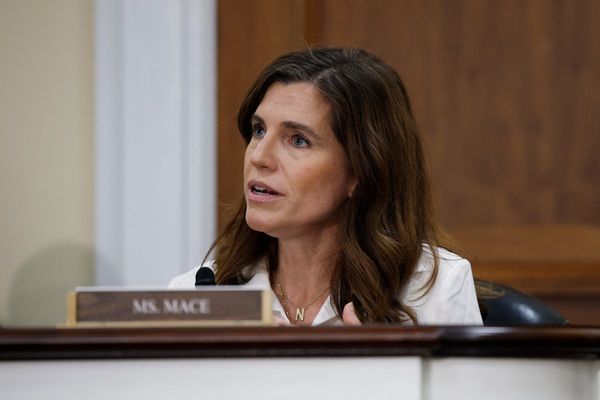
Last August, the federal government set up an expert panel to look at the continuous improvement agenda in teacher education in Australia.
The panel, led by Sydney University vice-chancellor Mark Scott (who also chairs The Conversation’s board), has just released a discussion paper that is open for consultation until April 21, ahead of a final report due in June 2023.
Remind me, why does teacher education need another review?
There has been a constant stream of reviews into teacher education in Australia. The most recent was finalised in February 2022. Led by former federal education department secretary Lisa Paul, the review recommended an “ambitious reform agenda” to attract “high quality” students and ensure teacher education was “evidence-based and practical”.
The Paul review recommended “strengthening the link” between performance and funding of teaching degrees.
The expert panel was, in part, borne out of the Paul review as well as national concerns about teacher shortages. A key issue raised at a federal government roundtable on teacher shortages in August 2022 was the need to “ensure graduating teachers are better prepared for the classroom”.
What does the 2023 discussion paper say?
The discussion paper seeks advice on four key areas:
how to strengthen undergraduate and postgraduate “initial teacher education” programs to deliver “confident, effective, classroom-ready graduates”
linking the funding of graduate outcomes with the funding for higher education providers
improving professional experience placements in teaching degrees
helping more mid-career entrants into postgraduate teaching degrees.
Each section of the discussion paper is relatively comprehensive, with useful case studies and a set of discussion questions.
However, the four areas are considered in isolation from one another and without due regard for how they interrelate. Also missing from the review is an appreciation of how initial teacher education degrees are one part of a teacher’s professional learning journey.
All the elements of reform are placed at risk when the sum of the parts don’t equal a whole.
We need a reality check
There is significant ongoing concern about teacher shortages and the number of graduates from teaching degrees. As Scott said on Thursday, “teaching is a tough job and it is increasingly demanding”. Education Minister Jason Clare has also highlighted the need to “increase [course] completion rates and deliver more classroom-ready graduates”.
At the same time, the Paul review found graduate teachers felt underprepared to teach reading, support diverse learners, manage challenging behaviour, work in regional settings, and engage with parents/carers. It’s important to remember these are all exceedingly complex aspects of classroom teaching – even for seasoned teachers and accomplished school leaders.
We need to have realistic expectations about what initial study can provide to graduate teachers. It can teach fundamental theories and provide professional experience, but teachers will need to keep adapting their skills and expanding their knowledge once they are in the classroom.
What works in one context with one set of participants may be less effective in another context because of another set of underlying factors.
This is why tailored induction programs and ongoing mentorship every time an early career teacher starts at a new school is crucial.
Unfortunately, workplace induction programs are usually only offered to teachers in full-time permanent jobs, and rarely to the army of graduate teachers who change schools on a regular basis because they are working as temporary or contract staff.
Read more: If Australian schools want to improve student discipline, they need to address these 5 issues
Entry requirements should not shut out aspiring teachers
The discussion paper focuses on increasing the numbers of First Nations students, as well as those from regional and remote communities, and low socio-economic backgrounds who become teachers – and rightly so. These groups of people are underrepresented in teaching degrees and each hold great potential to make significant contributions to the profession and to the lives of children and the community.
We need to be realistic about the number of prerequisites for education degrees.
The Australian Institute for Teaching and School Leadership develops accreditation standards for teacher education programs. State-based regulators, such as the Queensland College of Teachers, can also add their own requirements.
Meeting all these components add extra burdens to aspiring teachers, and there is no evidence to suggest additional entry requirements directly impact graduate teaching quality. For example, in Queensland, aspiring teachers must have successfully completed Year 12 English, mathematics and science before they can start a primary teacher education degree.
This is an issue given the primary teacher workforce is predominantly female, yet boys outnumber girls in Year 12 physics and advanced maths. This means many aspiring teachers need to do an extra science course before they start their primary teacher education degree.

What about linking funding to performance?
The discussion paper canvasses linking government funding for teaching degrees to a set of performance measures such as higher education providers’ capacity to attract high quality candidates from a range of backgrounds, retain those students until graduation, student satisfaction and their employment outcomes.
It suggests publicly reporting data about these measures and providing financial incentives.
We need to be very careful about any changes here and any unintended consequences such as disincentivising higher education providers from offering teacher education degrees.
Given there is a worldwide shortage of teachers, now is not the time to suggest a punitive response to matters of quality in initial teacher education, or to provide a multi-tier funding structure. Rather, we need more understanding of the funding and resources required to support preservice teachers to be the best they can be before they enter the classroom.
Beryl Exley works for the School of Education and Professional Studies at Griffith University. She has been the receipent of research grants to study teachers' work and teacher education. She is a director on a school board.
This article was originally published on The Conversation. Read the original article.







